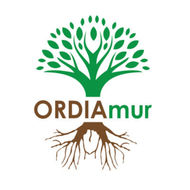doi:https://doi.org/10.15488/9997
Abstract
Apple replant disease (ARD) negatively affects the production in nurseries and orchards worldwide. A biotic cause of the disease is most likely since soil disinfection can restore plant growth. Fungi have appeared to contribute to the complex of biotic factors, but up to now the actual cause of the disease remains unknown. Further, environmentally friendly and practically applicable mitigation strategies are missing. Fungal root endophytes were isolated in two
central experiments of the ORDIAmur consortium. Dark septate endophytes (Leptodontidium spp.) were frequently isolated from apple roots. An abundant occurrence of Nectriaceae fungi (Dactylonectria torresensis and Ilyonectria robusta) was found in ARD roots. Reference sites displayed a different characteristic fungal community. In roots grown in
irradiated soil, a reduction of the number of isolated fungi and a changed composition of the fungal community was found. To investigate the effect of fungal endophytes on apple plants a quick and soil-free bio test in Petri dishes was developed using perlite. Inoculated fungi isolated from ARD roots induced neutral (Plectosphaerella, Pleotrichocladium, and Zalerion) to negative (Cadophora, Calonectria, Dactylonectria, Ilyonectria, and Leptosphaeria) plant
reactions. After re-isolation, most of the Nectriaceae isolates were confirmed as pathogens.
Microscopic analyses of ARD-affected roots revealed necroses caused by an unknown fungus that forms cauliflower-like (CF) structures in diseased cortex cells. Two extraction methods, Harris Uni-Core punch and laser microdissection, were applied to further identify the fungus by PCR. Different Nectriaceae species were identified which form intracellular CF structures during the infection process. Both extraction methods can be used to identify also yet
unculturable fungi from selected root areas of interest and help to avoid time-consuming
isolations. Mycoviruses can influence their fungal hosts in several ways and may alter virulence
(hyper- or hypovirulence) or toxin production. A hypovirulence-associated mycovirus has the
potential to act as a sustainable control of fungal plant pathogens. Here, the sequence of a novel
dsRNA virus originating from Dactylonectria torresensis is described, named Dactylonectria
torresensis alternavirus 1 (DtAV1), which is a putative member of “Alternaviridae”. In this work, Nectriaceae were demonstrated to be involved in ARD. Further investigations of microorganism and plant interactions are needed to clarify the cause of the disease, which will then help to develop targeted control strategies.
